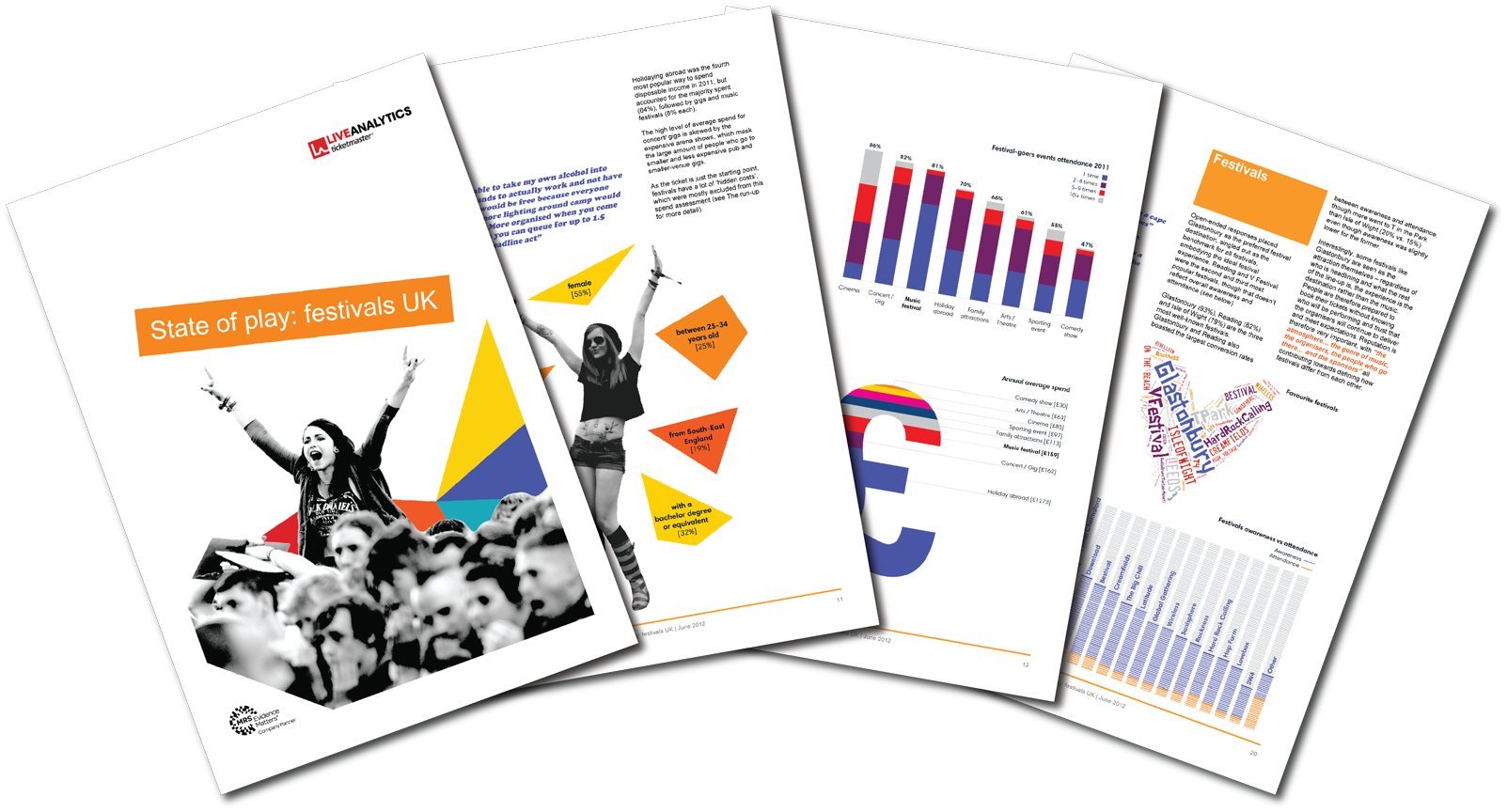
State of play
Tina Mermiri examines recent research to discover what the arts – and its sponsors – can learn from their audiences
With the UK economy still in recession, you’d naturally expect people to be saving for a rainier day, rather than spending their discretionary income on leisure, culture and entertainment. However, research shows that both free and paid-for cultural events in the UK are as popular as ever and demand is growing. The latest data release from the Taking Part survey shows that attendance to heritage sites, museums, galleries and arts events has increased significantly in the last couple of years, reaching record levels in Q4 of 2011/12.
A love of live entertainment is chief among multiple drivers encouraging people to attend music festivals, often year after year, State of play: festivals UK found. It also reported a significant overlap between music festivals and the arts: 61% of festival-goers had also attended an arts or theatre event in the past year, and more than one in ten had been more than five times.
That is not to say that no one is affected by the economy, but enough people are planning to maintain and increase the number of events they go to, and the amount they spend at each, to offset an overall decrease. So, culture and live entertainment can still be a consumer priority, even in troubled times. Which leads me to my next point: audiences, and more specifically audience data, are incredibly valuable assets for cultural institutions. The more you know about them the better you are able to make them happy and keep them coming back, whilst also attracting new audiences. But more needs to be done to help organisations develop an understanding of their audiences and how that can best be maximised.
Many sponsors are already aware that cultural venues and live events in particular are great ways to reach out to a captive and highly engaged audience in order to get them interested in, or reward them for their loyalty to, their brands.
I have written before on the value of sponsors for the arts, not just for the partner organisation, but also for audiences. Our most recent research on music festivals shows that the majority of attenders are happy for sponsors to be present at an event, with 64% agreeing that sponsors have a key role to play in making events financially viable. What’s most interesting is that close to half appreciate sponsoring brands and others consider sponsorship as a stamp of approval, particularly when it comes from a well-known and trusted brand.
That said, brand fit is one of the most important drivers of a successful sponsorship for music festivals. And as a large proportion of attenders have developed sophisticated mechanisms to filter out irrelevant information, the brands that resonate are likely to have the greatest impact.
This is about more than just brand fit: the activation methods are equally important, particularly across the younger generations who are more receptive of commercial brands and logos. They are also highly engaged with social media and increasingly expect to share and prolong their experience through multiple platforms, particularly digital, so providing several touch points for engagement is also important.
Understanding the impact this could have for sponsors and trying to quantify it will help build these relationships and make them as sustainable as possible. And understanding your audiences – your sponsors’ current or potential customers – is therefore the first step. First and foremost it helps you understand why they’re interested in you to begin with and what you can do to engage with them further, or simply not to alienate them. At the same time this kind of information is invaluable for sponsors as they want to understand more about who they’re reaching and how best to do it. And of course, this is also a good way to meet some of the Arts Council’s objectives on reach and engagement, and being able to prove it.
Your interest should go beyond basic demographics and aim to dig deeper into people’s motivations, their other interests, engagement patterns and so on – ACE’s report Arts audiences: insight 2011 is a good starting point. Finally, this could help not only targeted marketing campaigns but more impactful outreach for philanthropy too.
There are some noteworthy examples of arts organisations leveraging research and insight to make informed decisions on strategic issues ranging from outreach to sponsorship and philanthropy, but the sector as a whole could definitely benefit from being slightly more data-driven, particularly in attracting and retaining different segments of the population in engaging ways.
Join the Discussion
You must be logged in to post a comment.